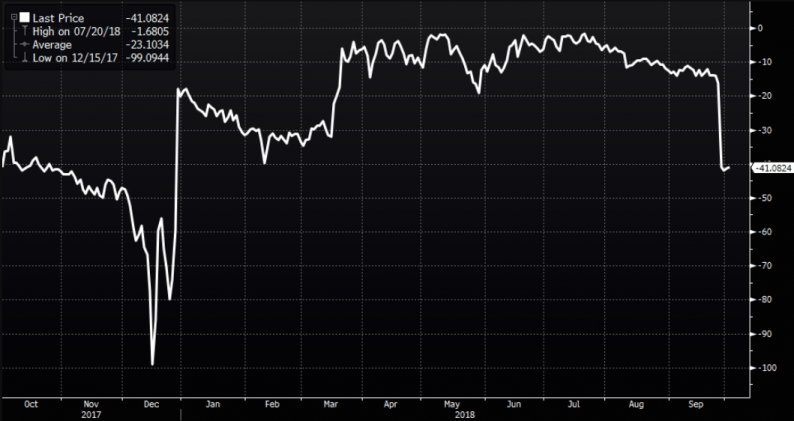Late last week, hedged Treasury yields turned negative for European and Japanese investors, a state of affairs that garnered quite a bit of attention as these things go, despite being the clear result of quarter-end effects.
The 3-month EURUSD X-Ccy basis fell 25bps on Thursday, the largest one-day move since 2009 (see below) and similar action unfolded in the 3-month USDJPY basis.

(Bloomberg)
Here’s the hedged yield for European and Japanese investors:

(Bloomberg)
This is obviously down to 3-month tenors capturing year-end. Here’s BofAML documenting the same dynamic for foreign investors in USD corporate bonds:
Thursday, the cost to hedge FX risk moved sharply higher for foreign investors that hedge USD corporate bond holdings by rolling 3-month FX forwards. On an annualized basis the 3-month hedging cost jumped 47bps to 318bps for JPY/USD and 23bps to 323bps for EUR/USD. The reason for these sudden increases is the fact that the three-month FX forward contract extends over the year-end today for the first time this year. It is more expensive because banks, and in particular foreign banks, make an effort to minimize their balance sheets on December 31st for regulatory reporting purposes. As a result these FX hedging costs will likely remain elevated for the remainder of 2018 and normalize on the first day of the new year – a pattern that repeats every year.

Calendar effects aside, this is obviously something that’s worth monitoring in the context of the USD shortage narrative and amid Fed tightening and balance sheet rundown.
On those points, Nedbank is out with something new on Tuesday that’s worth a mention.
“Since the Fed stopped growing its balance sheet and with the introduction of Basel, the costs of USD funding has also remained relatively expensive”, the bank writes, adding that they believe this “will persist as we operate in a structural environment where $’s are scarce (global trade, Fed QT, lower commodity prices)”.













Leave A Comment